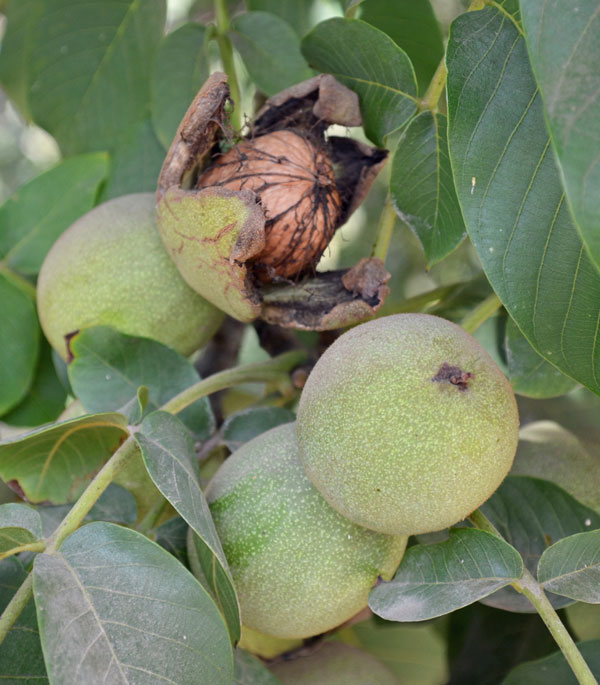December 2, 2015

Despite the drought and low chill hours, the U.S. Department of Agriculture is forecasting a record California walnut harvest of 575,000 tons statewide, up 1 percent from last year’s estimated 570,000-ton harvest.
Although most growers have completed the bulk of their harvest, it may be awhile before the industry knows whether a new record was achieved. Some growers point to the variability among orchards and varieties as reasons why the crop may come up short of a record.
Jake Wenger grows walnuts near Modesto, Calif. He says once the trees lose the leaves that he’ll have a better idea how many nuts remain on the trees and whether he needs to re-shake. So far, he believes the crop size looks similar to last years.
“I think most growers are close to where they were last year," Wenger said. “For us, we’re just a hair off.”
Although blight was not much of an issue this season, Wenger says Navel orangeworm (NOW) caused significant damage to the Vina walnut variety.
“For whatever reason, it seems like Vina had a lot of Navel orangeworm.”
Brent Barton, a walnut grower involved with the family-owned GoldRiver Orchards processing facility in Escalon, believes his yields will be down slightly.
“We're seeing a crop a little bit below normal quality with higher than normal mold,” Barton said.
“The kernel and color are variable. There's been some with good color and nuts which are darker. It has varied by the variety, harvest date, and the field.”
Farming near Merced is Bert Crane who says it’s too early to determine the statewide yield. He is waiting for scale tickets form his handlers to determine his yield. Crane sees a trend toward fewer jumbo-sized nuts.
On one ranch with mature trees, for example, Crane says the second pick yielded 71 percent jumbo, 11 percent large, 4 percent medium, and 8 percent ‘babies’. Historically, the orchard has yielded jumbos in the 80 percent range.
Walnut grower Dan Cummings located near Chico is more optimistic.
“Generally, I think walnut yields are better than last year. The edible meat yields and color are better. The nut sizes are smaller and the jumbo count is not as great as the last several years.”
During most years, Cummings says bloom toward the end of pollination does not set a crop. But this year favorable conditions occurred throughout the entire blossom period. Even the later blooms set nuts.
Cummings, who also grows almonds, says almond growers have reported wide yield variations across California based on orchard locations. He does not believe walnut yields experienced as wide of swings.
Cummings believes the USDA walnut estimate is close to accurate.
As of the last day of the 2014-15 marketing season (Aug. 31), walnut handlers reported receipts totaling about 562.5 million pounds, just short of last year’s USDA objective estimate (570 million pounds)
U.S. exports of shelled walnuts for the 2014-2015 season (Sept. 1, 2014 -Aug. 31, 2015) was 31 percent higher, compared to the 2013-2014 season - reaching 529 million inshell equivalent pounds, according to the California Walnut Board.
Of the total shipments, about 333 million inshell equivalent pounds were exported while nearly 200 million pounds were sold domestically.
Although the 2015-2016 marketing year has just begun, many growers expect walnut prices to fall.
Wenger said, “What I’ve been hearing suggests that walnut prices could be lower – perhaps around $1.25 per pound for Chandlers which is down significantly from last year.”
He added, “It's still early to say but I think everyone can expect a pretty big drop off from last year. Last year’s prices were astronomical.”
Barton agrees, and sees long-term opportunities for walnuts. He points to increasing walnut demand by consumers. Research suggests that walnuts are a ‘super food.’
On the price side, Barton said, “There’s a new reality beginning to set in with grower prices. Prices are down now compared to two months ago so we expect the farm gate value to drop considerably.
“We're no doubt in a correction right now,” he concluded.
You May Also Like




